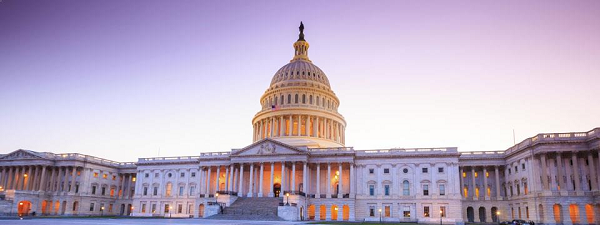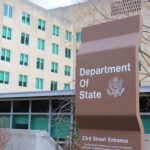Hundreds of thousands of foreign nationals with approved immigration petitions are currently unable to obtain visas to enter the U.S. because of the unprecedented visa backlog caused by the COVID-19 pandemic.
In years past, temporary foreign workers, investors, students, and tourists would secure nonimmigrant visa appointments at embassies or consulates within weeks, if not days. Now, the earliest appointments are often more than a year out. Some consular posts have even completely suspended the adjudication of certain visa types, such as E treaty trader or investor visas.
Before the COVID-19 pandemic, individuals planning to move to the U.S. permanently to fill labor or skills shortages or to be reunited with their American families would have immigrant visa interviews within two to three months of U.S. Citizenship and Immigration Services approving their underlying petitions, provided their priority dates were current. Now they could be waiting for up to five years based on National Visa Center (NVC) data.
Last year, fewer than half of the number of nonimmigrant visas were issued compared to before the pandemic.
The immigrant visa backlog is nearly six times the normal backlog and encompasses nearly half a million documentarily qualified applications at the NVC, even though consular posts are again issuing close to the same number of immigrant visas as before the pandemic.
The visa backlog prevents individuals from pursuing the American Dream, impedes U.S. businesses from bringing in foreign talent to fill seasonal and permanent positions, and keeps families separated.
The Biden Administration and U.S. Department of State should act swiftly to develop and implement a comprehensive visa backlog reduction plan to reopen America’s doors to legal immigration.
The Origins of the Visa Backlog
A number of significant obstacles to family and employment-based immigration arose in response to the COVID-19 pandemic, largely shutting down U.S. immigration.
Immigrants faced the global suspension of visa services (March 2020 – July 2020), the immigrant visa ban (April 2020 – February 2021), the nonimmigrant visa ban (June 2020 – March 2021), geographic travel bans (January 2020 – November 2021), immigrant visa prioritization (April 2021 – November 2021), and the reduced capacity of consular posts to process visa applications.
In 2020, immigrant visa issuances averaged 23% of pre-pandemic levels. Nonimmigrant visa issuances dropped to 17% of pre-pandemic levels, practically closing off the U.S. to new temporary workers, investors, students, and visitors.
Nonimmigrant Visa Backlog
The current nonimmigrant visa backlog is critical with less than half of the number of temporary visas issued last year compared to before the pandemic.
In 2019, an average of over 721,000 nonimmigrant visas were issued each month. The first year of the pandemic, an average of fewer than 126,000 nonimmigrant visas were issued each month. The second year, an average of fewer than 343,000 nonimmigrant visas were issued each month. The most recent data available shows that posts issued less than 485,000 nonimmigrant visas in February 2022.
National Visa Center Backlog
The NVC preprocesses immigrant visa applications in the United States and forwards applications to consular posts worldwide as interview appointments become available.
Nearly half a million individuals with approved immigrant petitions are currently waiting for an interview. This figure reflects a 600% increase in the NVC backlog. As of April 2022, more than 421,000 documentarily qualified cases are pending at the NVC compared to a monthly average of about 61,000 cases pending interviews in 2019.
Over the past 6 months, the backlog has been reduced by fewer than 40,000 applications. Without a focused and accelerated backlog reduction plan, at this rate, it would take nearly 5 years to return to 2019 levels.
Immigrant Visa Backlog
In the past few months, posts have issued nearly the same number of immigrants visas each month as before the pandemic. This development correlates with the State Department’s temporary policy that prioritized immigrant over nonimmigrant visas between June and November 2021.
Before the pandemic, posts issued an average of 39,000 immigrant visas each month. The first year of the pandemic, that number dropped to approximately 9,000 visas a month. In February 2022, posts issued 36,000 immigrant visas, just short of 2019 levels.
However, a return to the old state-of-affairs will not suffice. The State Department must implement a concrete plan that greatly surpasses the current visa processing capacities to reduce the backlog.
Visa Backlog Reduction Proposals
The American Immigration Lawyers Association (AILA) has put forth pragmatic solutions to clear the backlog. Last summer, AILA published a policy brief and met with White House representatives to discuss concrete backlog reduction proposals that would alleviate the pressure on offices still dealing with pandemic restrictions in many countries.
Recommendations include the expansion of visa interview waiver eligibility, the resumption of stateside visa renewals, the automatic extension of expired visas, increased consular staffing, the revision of regulations to allow virtual visa interviews, and the adjudication of visa applications by U.S.-based consular officers.
The State Department listened and recently expanded nonimmigrant visa interview waivers, giving consular posts discretion to waive interviews not only for renewals but also for individuals switching classifications and even first-time visa applicants, provided they meet certain requirements. But because implementation is optional, many posts do not offer waivers to their full extent or at all. Practitioners should consult a post’s website to determine whether the post offers interview waivers and the requirements, which vary by post.
In addition to considering AILA’s proposals, the State Department should encourage consular posts to implement interview waiver procedures to their full extent, allowing all eligible applicants to obtain a visa without an in-person interview.
The visa backlog requires urgent attention. The State Department must craft a comprehensive backlog reduction plan that includes increased capacity and expanded staffing, as outlined in AILA’s proposal.
By clearing the backlog, the Biden Administration can reopen the doors to our legal immigration system. Families will be reunited, and businesses will again have the opportunity to bring foreign talent to the U.S., spurring economic activity and creating American jobs.










